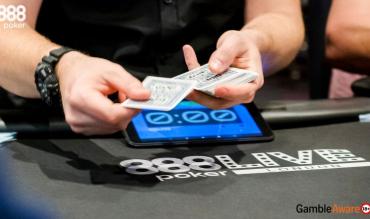Updated on April 8, 2025
Ideally, casinos aim to make games as fair as possible for all poker players. This process ensures all players have an equal chance to win, depending on a player’s own skill and the inevitable turn of the cards.
Not allowing ratholing is one of these measures that poker rooms use to ensure fairness in cash games.
So, exactly what is ratholing in poker games?
| Ratholing in poker is when a player leaves a game with a specific amount of chips and later attempts to get back in the game with a lower amount of original poker chip values. |
The word “Rat” has a negative connotation that carries over to the poker world. Ratholing is generally a negative poker term.
This article explains what ratholing is and why it’s often not a good idea - whether that viewpoint is true or not.
Why is Ratholing Not Allowed in Some Poker Rooms?
Some players new to the game may wonder why ratholing in poker is a bad thing. Most players wouldn’t want to associate with a rat in most contexts, but what about this move is wrong?

Ratholing might be a way to make off with winnings, not allowing opponents to win some of their money back. This concept is similar to a “hit and run,” where a player wins quickly and then exits the tables, so other players have no chance at winning some of their money back.
This move is akin to flaunting a poker cheat sheet, which is considered poor poker etiquette and looked down upon by many players.
Ratholing works like this: A player leaves the table to pocket some winnings and then buys back in for less.
Many poker rooms have an anti-ratholing policy: Players must buy into the same game with at least the amount they left within a session.
An Example of Ratholing in Poker
Here’s a quick example of what ratholing in poker looks like:
- Imagine a player has left a game with 250 big blinds.
- This player then decides to take a break and exit the action, cashing out those chips in the process.
- Perhaps 20 or 30 minutes later, this player decides to jump back in the action and rebuys chips.

After deciding to buy into the same game after a short period, this player would need to buy in for at least 250 big blinds, the same amount they originally left the table with.
This rule would typically apply in types of poker games where the maximum buy-in was 200 big blinds. Usually, casinos implement a time constraint to a rathole policy.
Once the time limit is up, the player is free to buy in again for any allowed amount.
Why Would a Player Try to Rathole in Poker?
Now that you know what ratholing is in poker, you may wonder why someone might attempt to rathole at the poker table.
- After a nice run at the tables, some players may want to pocket some of those winnings. They may then attempt to buy back into the game with fewer dollars at risk and a tidy profit already banked.
- Along that same note, a player who scored a huge pot may attempt to do the same thing, banking that big win while risking less when getting back into the game.
These players may even feel outmatched, and ratholing can allow them to keep some of their winnings while continuing to play with those same players.
Ratholing is considered unethical behaviour since it denies opponents the chance to win back their stack.

For example, if a player wins 200 big blinds from an opponent, promptly leaves the table and rebuys in for just 100 big blinds, he can no longer win his money back the next hand. The winning player now has only half of that original stack in play.
Unlike a play like a poker bluff, opponents and casino staff may view players trying to rathole negatively. Casino personnel often work to ensure ratholing doesn’t happen in the poker room.
Example of Ratholing Used in a Sentence
Now you know the answer to the question, "What is ratholing in poker?" Having an idea of how to use the term in a sentence is essential.
Here are a few examples:
- Ratholing is a popular way to avoid deep play in online fast-format cash games.
- Steve tried to rathole in our cash games. He left with $300 and then tried to buy back in for $200.
- We didn’t appreciate the new player’s attempt to rathole back into the game for less than he bought in for after simply grabbing a coffee.
- Ratholing can draw some criticism from fellow poker players because they don’t have the chance to win some of their cash back.
- No one wants to be a rat – so avoid ratholing in your local poker room.
- Is ratholing in poker really that much of an advantage?
Having an idea of how this concept works will help you avoid committing a "poker foul", and watch out for players attempting to rathole.

How to Use Ratholing as Part of Your Poker Strategy
Is ratholing a good strategy, and does it affect the play on the table? Despite its negative image, ratholing adds zero advantage to the ratholer from a skill or gameplay perspective.
Returning to the table with less money to lose could slightly affect poker variance. However, ratholers still have to play like everyone else, just with a reduced chip stack.
Anti-ratholing policies curb perceived injustice rather than prevent legitimate angle shooting. Those chips are theirs once a player has won an opponent's stack.
They can cash out of the game at any point. No mathematical reason exists why they should not be able to remove a number of chips and cash them out.
- The existence of anti-ratholing policies confuses more experienced players. However, if it keeps the recreational players happy, there may be something to be said for it.
- On the other hand, some players are adamant that ratholing shorts the table of chips that were in play in the original game.
However, a surprising number of players to this day believe that ratholing confers an unfair advantage to the ratholer.
Perhaps even the casinos and poker rooms themselves believe this myth, which is why such policies still exist today.
See Also


